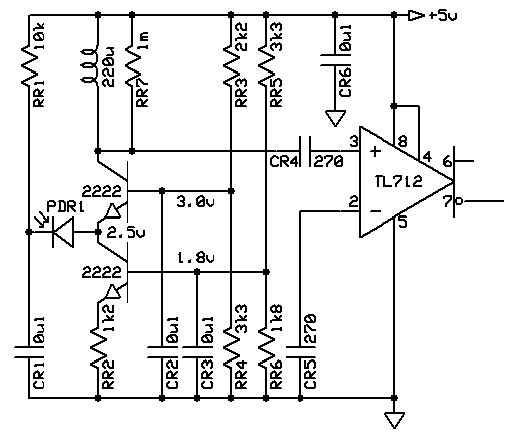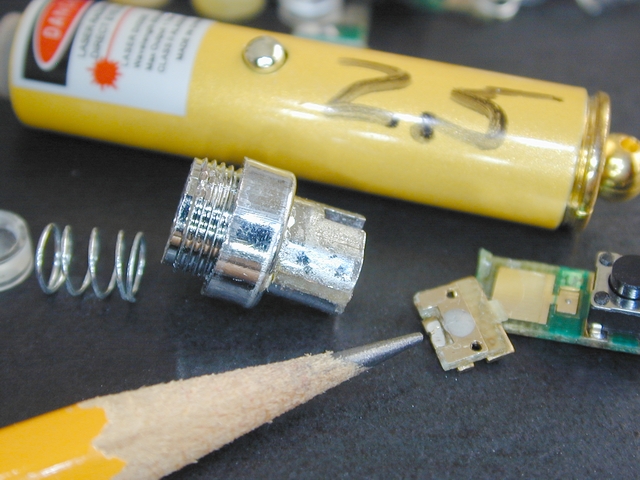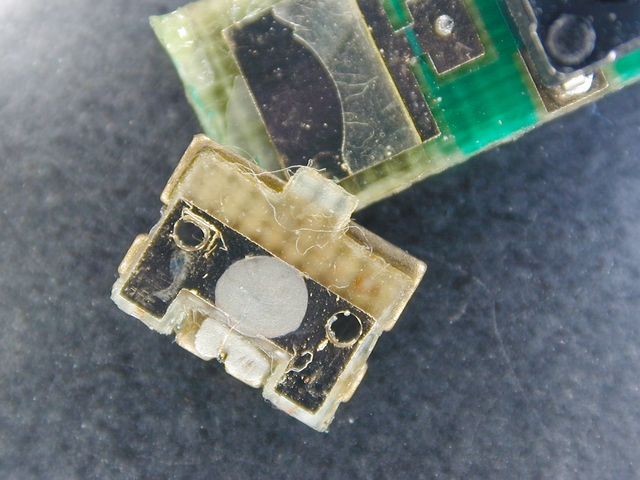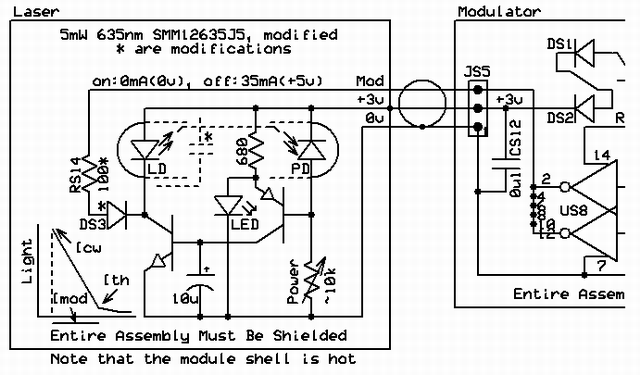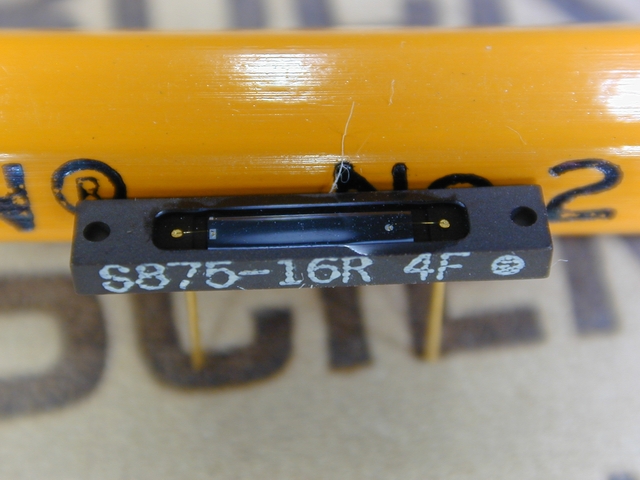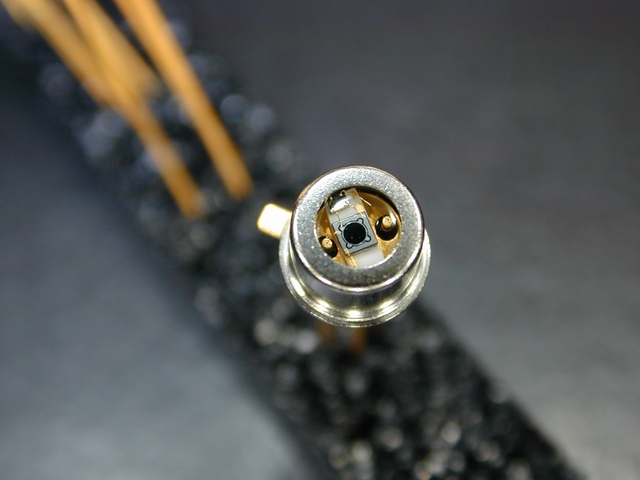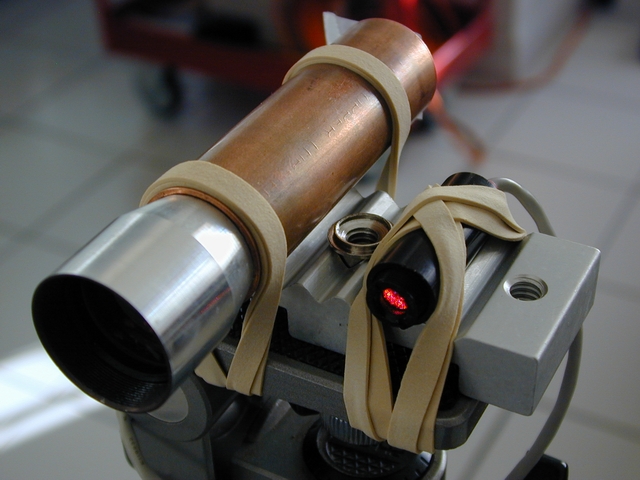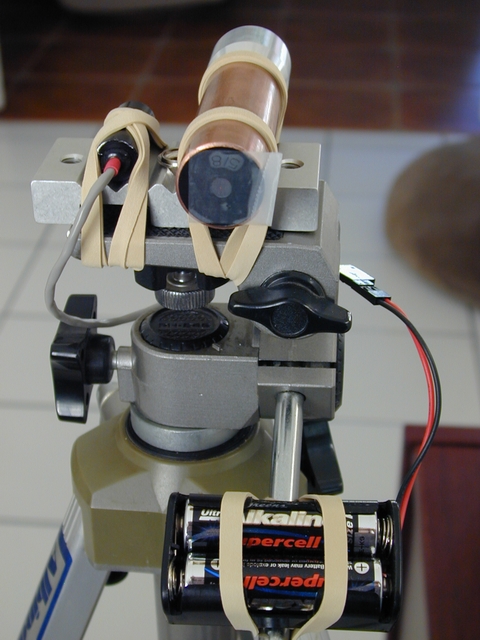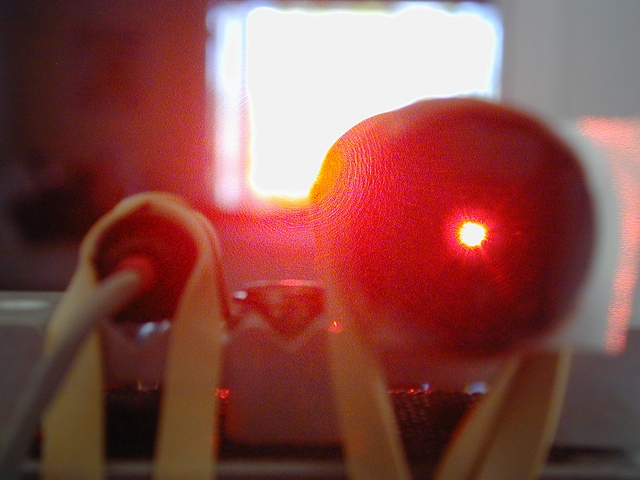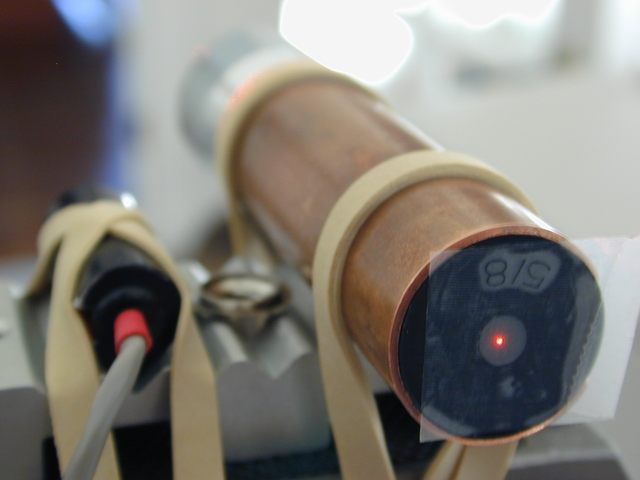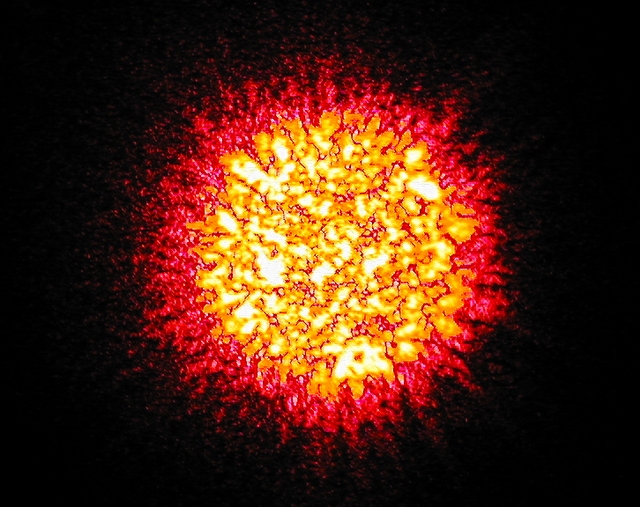mooreaa wrote:Is this what you are using on your system?
I've built several different receivers. This is one type that solves several inherent problems, is simple to build and works pretty well.
One objective is a fast photodiode, but photodiodes exhibit capacitance which tends to slow them. Photodiodes can be operated in several modes; one is voltaic mode, where it generates a voltage that changes with illumination. This is a good mode for linear accuracy but it is slow because the voltage must charge the diode capacitance. Another mode is conductive, where the diode passes a current that changes with illumination. Although less linear, this mode can be faster because the voltage across the photodiode can be made to be constant, avoiding the charge/discharge cycle.
In this circuit, two transistors are connected and biased so that the junction between them is at a fixed voltage, ~+2.5v here, by the emitter follower configuration of the upper NPN transistor whose base voltage is fixed by the voltage divider RR3/RR4. Since the photodiode cathode voltage is also fixed at +5v here, the voltage across the photodiode cannot change with changes in illumination and is fixed at 2.5v. That constant reverse-bias charge helps the photodiode respond quickly.
[Ideally, neither RR1 nor CR1 would be necessary if a quiet stiff reverse-bias source is available, but this single +5v supply requires some isolation and filtering to reduce supply-induced noise into the photodiode. This allows some voltage drop across RR1, and therefore the photodiode, which changes as the photodiode current changes, so it is not perfect but the change is small in normal illumination. Still, a smaller RR1 will make the photodiode faster at the probable cost of increased noise.]
The lower NPN transistor is configured as a constant-current sink, determined by its fixed base voltage from voltage divider RR5/RR6 and the emitter resistance RR2. The resulting current through RR2, and therefore the transistor's collector, does not change. The result is a constant-voltage/constant-current node at the junction of the two transistors and the photodiode.
When the photodiode current changes as illumination changes, the constant-current sink forces the current change to be reflected in the upper transistor's collector current, the only source it can come from. If a load resistor were substituted for the inductor, a changing voltage would be created across it as the current through the resistor and upper transistor changes. That changing voltage is AC and will pass through CR4 to the comparator. The effect is that a changing photodiode current results in a changing voltage without changing the voltage across the photodiode itself, therefore maintaining its speed. This two-transistor connection is called
cascode and the current-to-voltage conversion makes it a
transimpedance amplifier.
The inductor and capacitive coupling to the comparator's input impedance prevents constant (and low-frequency) illumination from passing through to the comparator. This makes the circuit insensitive to most ambient illumination (which must be below saturation of the sensor), making it a
sunblind detector (a relative term; obviously, don't point this at the Sun, but the detector should work in daylight). If the inductor is chosen so that it resonates at a useful frequency, there is some voltage gain at that frequency and some loss at other frequencies, making the circuit moderately modulation-frequency selective.
The TL712 comparator is unusual in that the inputs are internally DC biased. That makes it a handy AC comparator, and it has 5mV of hysteresis at the inputs which reduces chatter from small signals. Its outputs are TTL, so a modulation-frequency logic signal appears on them. If you are building a TOF optical oscillator, these logic signals can be used to toggle the laser; the modulation frequency in that case is not fixed so the inductor resonance might be chosen for the lowest practical optical oscillation frequency to increase gain at longer distances that simultaneously suffer from inverse distance losses.
More AC gain will be required for a practical detector of some range, but this is sufficiently sensitive to see results from a bright return from a retroreflector, like that posted early in this thread.


